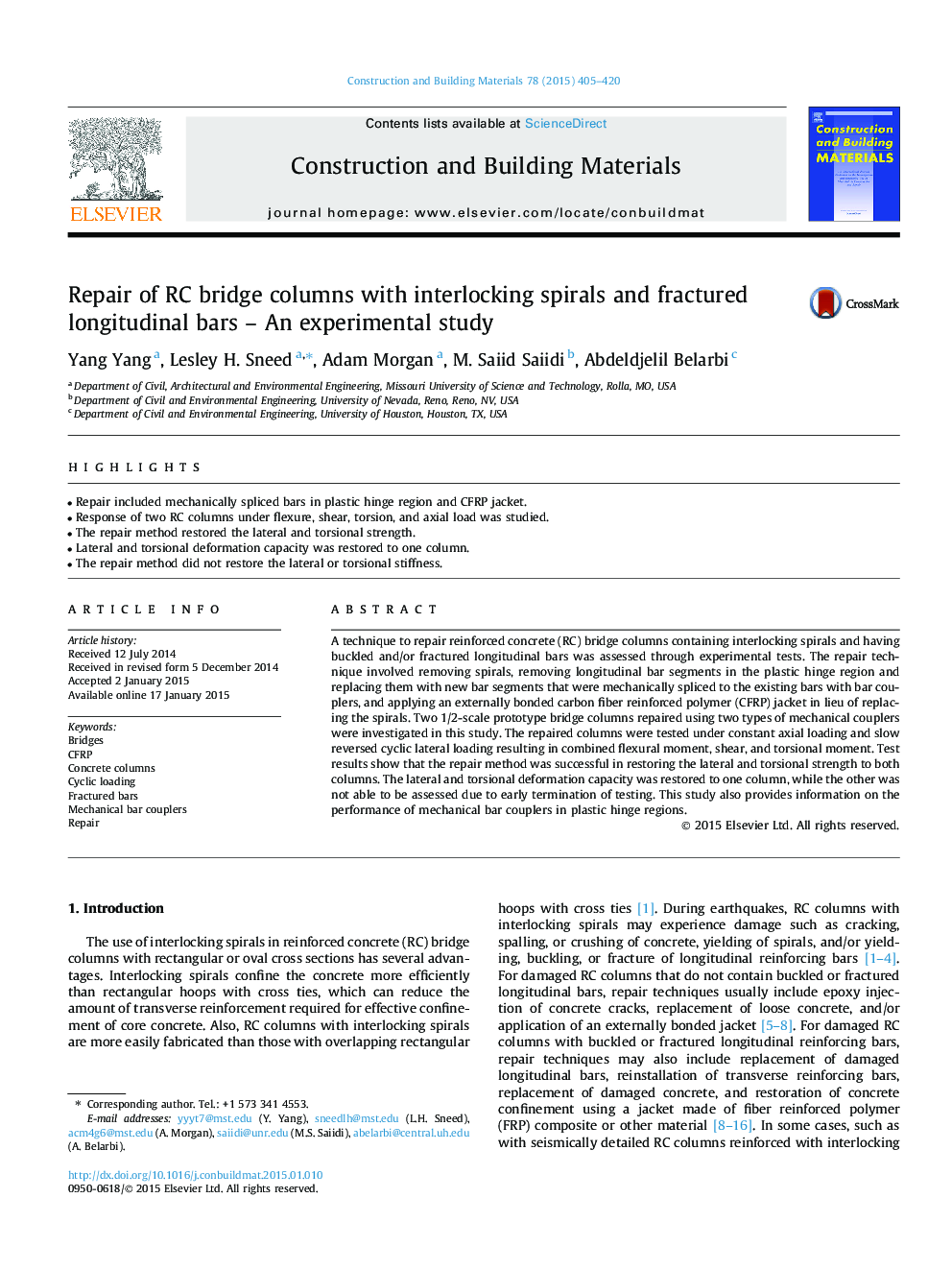| Article ID | Journal | Published Year | Pages | File Type |
|---|---|---|---|---|
| 257128 | Construction and Building Materials | 2015 | 16 Pages |
•Repair included mechanically spliced bars in plastic hinge region and CFRP jacket.•Response of two RC columns under flexure, shear, torsion, and axial load was studied.•The repair method restored the lateral and torsional strength.•Lateral and torsional deformation capacity was restored to one column.•The repair method did not restore the lateral or torsional stiffness.
A technique to repair reinforced concrete (RC) bridge columns containing interlocking spirals and having buckled and/or fractured longitudinal bars was assessed through experimental tests. The repair technique involved removing spirals, removing longitudinal bar segments in the plastic hinge region and replacing them with new bar segments that were mechanically spliced to the existing bars with bar couplers, and applying an externally bonded carbon fiber reinforced polymer (CFRP) jacket in lieu of replacing the spirals. Two 1/2-scale prototype bridge columns repaired using two types of mechanical couplers were investigated in this study. The repaired columns were tested under constant axial loading and slow reversed cyclic lateral loading resulting in combined flexural moment, shear, and torsional moment. Test results show that the repair method was successful in restoring the lateral and torsional strength to both columns. The lateral and torsional deformation capacity was restored to one column, while the other was not able to be assessed due to early termination of testing. This study also provides information on the performance of mechanical bar couplers in plastic hinge regions.
